Top 5 vegetables for children to grow
Sometimes, getting children to eat vegetables can be challenging. However, a great way to help overcome this is to encourage them to have a go at growing their own!
Spring is the perfect time of year for sowing veg seeds and planting out veg seedlings. Here are five easy-to-grow types of vegetables that might just spark a lifelong passion for growing and eating them!
Radish
Sowing radish seeds is great not only are they easy to grow and brightly coloured, but they also germinate quickly. Seedlings appear within about a week, the perfect period to keep a young child interested in the process.
Look for mixed varieties such as ‘Rainbow Mix’ and ‘Watermelon’, plus the longer length ‘Long Scarlet’ and ‘French Breakfast’ mixes.
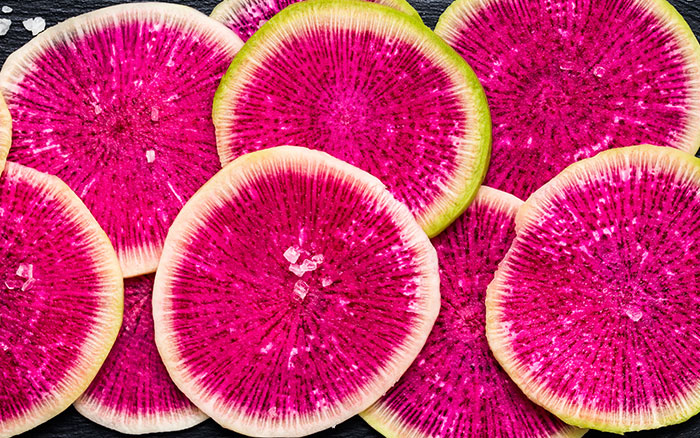
'Watermelon'
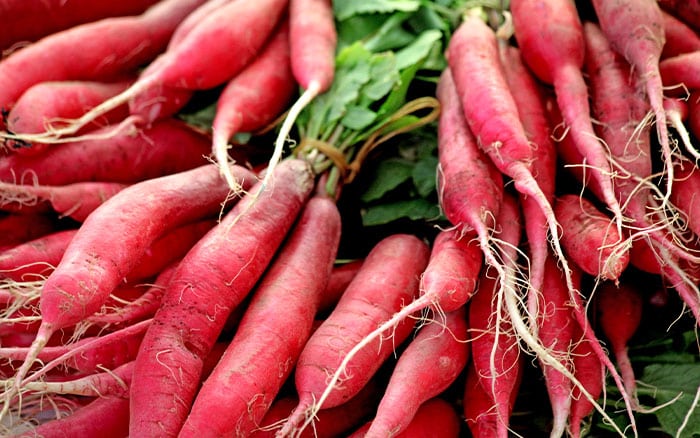
'Long Scarlet'

'French Breakfast'
The crop is usually ready to harvest in just three or four weeks. And what’s better is more radish seeds can be sown every few days to keep a constant supply being produced. This is an ideal way of keeping children engaged whilst they wait for other, easy-to-grow veg to crop.
The other great thing about radishes is that they can be planted year-round in veg beds or medium-sized pots. Make sure pots are at least 20cm deep to allow the roots to develop fully. And water regularly to avoid too much heat or bitterness developing, which can be unpopular with children.
Beans
Green beans are the perfect choice for children to grow, particularly runner beans. Their seeds are not only large but easy to handle. Also, they have pretty markings on them, which are sure to appeal to children.
The seeds can be planted straight into the ground once all risk of frost has passed in late May. Or, alternatively, in large pots.
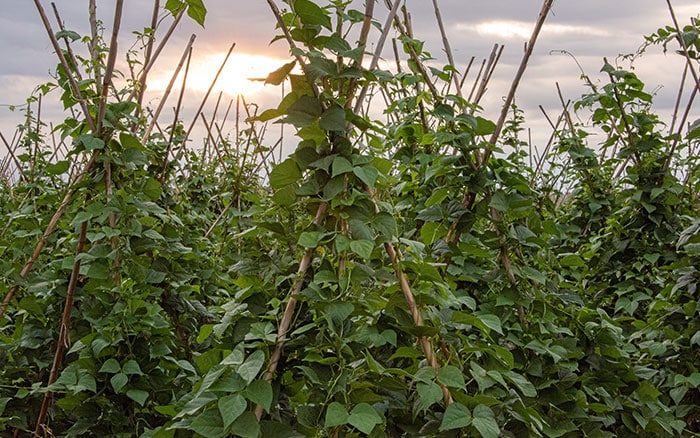

There are lots of different types of beans from runner to climbing or dwarf, French, or borlotti beans. Most will need a form of support to grow up, which can be a fun activity for children. They can help make a wigwam structure from either bamboo canes or hazel poles tied at the top with twine.
Children will love to see the stems of the bean plants twirling their way up to the top of the structure. This is followed by the appearance of the lovely flowers. Watching bees pollinate the flowers is a great way for children to learn how and why the fruits magically appear.
Most bean crops mature firstly from the lower level. This is ideal for smaller children to forage amongst the leaves looking for the right size bean to pick.
Peas
Peas are not only easy to grow quickly and successionally but taste super sweet. And they are great fun for children to pick and eat straight from the pod. The young pea shoots and flowers can also be harvested for use in salads.
Peas are a great choice for children to sow when the weather is cooler. A really fun way for children to grow is to start them off in a length of half-curved guttering. Once germinated and grown to a height of about 15cm the whole row in the guttering can be moved. Do this into pre-prepared planting trenches and children are bound to love doing this!
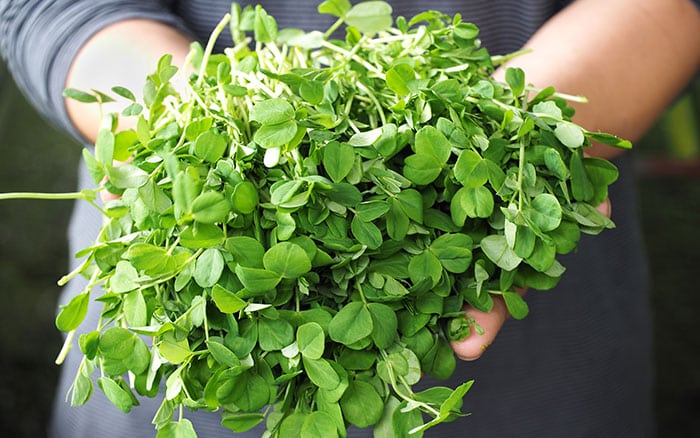

The large seeds provide an easy process for children to learn how to sow veg seeds and pea seeds. And how they can be sown successionally throughout the spring and summer. They also can be involved in finding twiggy supports for the stems to scramble up and across.
At the end of the growing season, peas along with runner beans are excellent crops for children to learn how to save seed for sowing the following year. Just leave the pods on one plant and wait for them to dry naturally at the end of the season. Harvest the pods when they’re mature and dry. Remove the seeds and store them in a brown paper bag or envelope ready to plant the following year. And make sure the children write the name of the crop and the harvest year on the packet.
Carrots
Carrots are another sweet-tasting, easy vegetable to grow. There are varieties available in purple and yellow as well as traditional orange, long and even rounded too! They take up little space and can even be grown in pots.
Like peas and radishes, it’s a great idea to sow small batches say every two weeks from early spring onward. And some varieties can be sown in the autumn too such as ‘Autumn King 2’.
If the soil is heavy clay or stony, grow round-rooted varieties like ‘Paris Market’. Carrots can be affected by carrot fly but there are varieties such as ‘Flyaway’ with good resistance.
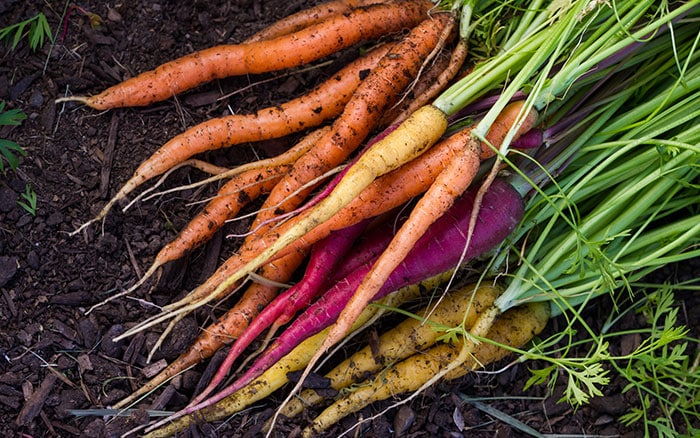
Tomatoes
Tomatoes are fun for children to grow as, like peas, they delight in picking and eating them fresh. Whilst not technically a vegetable, they are enjoyed in a vegetable style in many familiar meals for children.
Avoid cordon varieties as these need to be staked and surplus leaves ‘pinched out’ to get a good crop.

Instead, look for bush varieties as they are self-supporting. Cascading branch varieties that produce lots of small tomatoes are ideal for children such as ‘Tumbling Tom’ and ‘Rainbow Drops’. Another naturally cascading bush variety that produces large yellow and red striped fruit is ‘Firecracker’. Plant either in pots or hanging baskets using good quality, peat-free compost.
Remember to show the children to water and feed the plants regularly with a high-potassium tomato feed. This will help to produce the tastiest fruit from August until early autumn.
Gardening can easily be made fun for children of various ages with these easy-to-grow vegetables.

